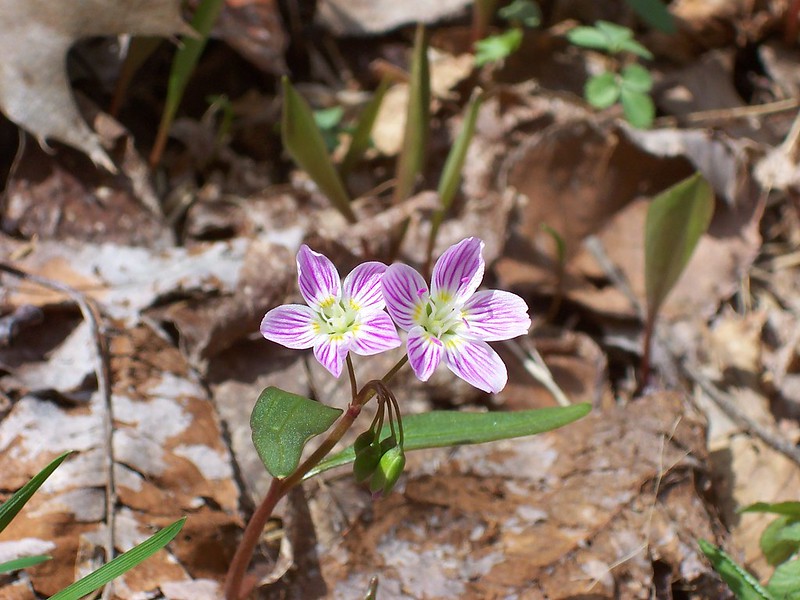Winter is a monster with icy claws, wrapping itself around the roof of the earth for months at a time. Winter’s icy breath chills the bones and chases animals and retirees to the south to escape. Trees drop their leaves in fear and hunker down. Animals fall asleep or grow thick fur as armor against winter’s icy spears.
Spring is a blonde fairy child, dancing north and dropping hints of springtime hope. Flowers uncurl under the snow, waiting for warm spring sun to pop them open. Birds start winging north, dollops of color in a gray forest that sing a giant welcome to the coming spring. Eggs drop into the nests of Bald Eagles and Great Horned Owls.
Naturalists are a strange breed of individual that have their own cues for spring. Learning to understand nature’s cues for the demise of winter is an esoteric art. This year, with so many people so ready to watch winter end, is a great year to practice.

Two of the first things to look for to know that winter is on the way out are nesting Great Horned Owls and Bald Eagles. These birds nest when snow is still falling. Their young are learning to hunt just as the other animal’s babies are coming out later in the year. Most people don’t know where to find owl or eagle nests, but it is easy to go online and look for live camera streams of them there.
Another sign of spring is budding flowers under the snow. By February, there are a slew of wildflowers that have leaves and are sprouted under the snow and leaf litter. I look for Spring Beauties and Wood Anemones every year. They are there, waiting under the snow for warm days in April to help them burst into bloom.
One of the most popular native flowers to look for in spring is often not even recognized as a flower. Pussy Willows put out their gray puffs in early spring, which many people love to collect and look at. Few realize that these fuzzy gray things are catkins, the flower of the Pussy Willow. They are now starting to come out and show their pale gray fuzziness.
Less well-known as a sign of spring is the Skunk Cabbage. Many kids (and adults) have taken delight in smashing the huge leaves of a skunk cabbage and creating a stink that is quite skunk-like. The flowers melt their way up through the snow now. They grow so fast that they generate their own heat. The tent-like flowers create their own temperature of 68 degrees Fahrenheit. These create warm places for Honey Bees to gather pollen and nectar. The flower smells like old rotten meat, which attracts carrion flies and other insects as pollinators. Search in low, swampy forests like Audubon for the first Skunk Cabbage blossoms.

Migrating birds are also a great sign of spring. Birds start migrating in part based on hours of daylight in a day and warmer weather. While many people look for robins as a sign of spring, they can be misleading. Many robins spend the winter here, munching on berries and other food. Some people even had them eating suet at their feeders this winter. My favorite spring migrant is the Tundra Swan. It doesn’t live here, but passes through every spring and fall. For me, this bird heralds the beginning and end of each winter.

Spring is also heralded by a cascade of sound. The chickadees start singing a little high pitched two toned “seeee saaaww” call to advertise territory. Mourning Doves start making soft owlish coos. Cardinals start singing “Birdy birdy birdy” calls. Swamps fill with the sound of returning male Red-winged Blackbird calls. Their “Chick-a-reee” calls are a true herald of spring. These birds have also returned to Audubon this week.
Soon, the hawk migration will start. The Ripley Hawk Watch has been watching hawks each spring for decades. Some days may see as many as 20,000 hawks fly overhead as they migrate north toward Canada.
Spring officially starts on March 19 this year. This marks the day the earth tilts toward the sun so much that we have equal amounts of daylight and night and is called the equinox. It will be a good day to get outside and look for signs of spring. Wander over to a nearby lake and look for ducks. Venture down to Audubon and look for Red-winged Blackbirds or Tundra Swans. Search for the sweet stench of spring coming from the Skunk Cabbage patch as it melts its way up to the sun.
Audubon Community Nature Center builds and nurtures connections between people and nature. ACNC is located just east of Route 62 between Warren and Jamestown. The trails are open from dawn to dusk as is Liberty, the Bald Eagle. The Nature Center is open from 10 a.m. until 4:30 p.m. daily except Sunday when it opens at 1 p.m. More information can be found online at auduboncnc.org or by calling (716) 569-2345.
Jeff Tome is a naturalist at Audubon.


Recent Comments